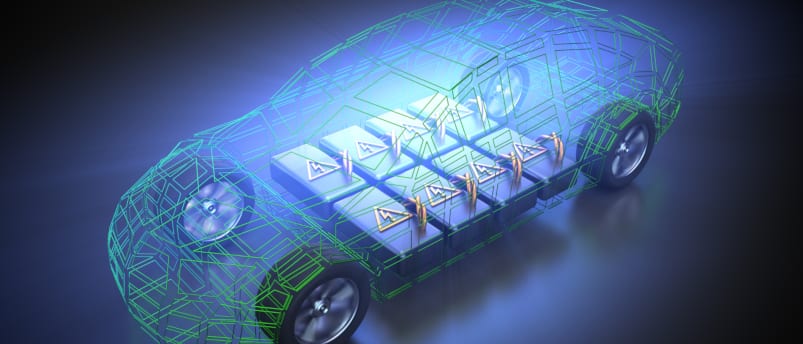Efficiency in power conversion is critical for the deployment and adoption of new energies, including solar and battery-powered applications. At the recent ST Developers Conference, ST’s Alfredo Arno provided an overview of electronic power components that compared silicon and new wideband gap materials for power conversion, with a focus on ST’s Silicon Carbide (SiC) discrete products and modules for electric vehicles. In fact, one of the fastest-growing areas for electrification is in transportation—it’s estimated that more than 20 percent of the world’s energy is used in transportation systems.
SiC components for hybrid and electric vehicles
Within transportation, hybrid and electric vehicles are quickly gaining in popularity. One of the distinctive aspects of these automobiles is the number of high voltage systems they contain. A high voltage battery ranges from 400 to 800 volts, with a number of other electrical systems feeding off this battery in different ways. These systems include auxiliary power supplies, DC-DC converters, the traction inverter, as well as the battery management system itself. The traction inverter feeds the motor and it is the most critical to how long vehicles can run until it needs to be recharged. In addition, the onboard charger replenishes the battery: the greater the power we can put in the battery, the faster it can charge. Electronic power elements are important in each of these systems not only for the performance they deliver but also for efficiency: For an electric vehicle, size, weight, and volume are important because this is a mobile system and more efficient systems are potentially lighter and more compact, requiring a smaller footprint under the hood.

To meet the requirements of high performing, higher efficiency components for high voltage electrical systems, ST has developed a range of silicon carbide-based MOSFETs and diodes that are very conducive to automotive applications that require high voltage and high-density power conversion in a compact package.
Silicon carbide has a number of material-property attributes that make it a superior option for automotive-grade electronics components. Silicon carbide’s wideband gap energy is three times higher than that of traditional silicon and this larger bandgap allows SiC devices to operate more effectively and efficiently at higher voltages and hotter temperatures. SiC devices also feature electron saturation velocity that is twice as fast as in silicon, enabling faster switching transitions. Then, the dielectric constant of silicon is about 20 percent less than silicon carbide and this actually helps boost efficiency because, everything else being equal, it reduces parasitic capacitance by that same amount.
SiC components: smaller, cooler and more efficient
A function of the wide bandgap, the really significant attribute that makes silicon carbide superior is its critical electric field strength of 3 megavolts per centimeter versus 0.2 megavolts per centimeter for silicon. This means that silicon carbide provides more than 10 times higher critical electric field capability than traditional silicon. This, along with several other properties of SiC (elaborated here), allows ST to make silicon carbide-based devices both smaller and more efficient than is possible with silicon. Silicon carbide also provides about three times higher thermal conductivity than silicon, enabling faster dissipation of heat from components. This is important because as silicon-based devices become smaller in area, it becomes harder to extract the heat generated by the electrical conversion processes—and silicon carbide dissipates heat better. Still, there are other things designers can do, including making the device itself more efficient, to produce less heat. Also, because of silicon carbide’s higher thermal conductivity, it’s easier to effectively extract the heat that is generated.

In short, silicon carbide allows power devices to go beyond the limits of silicon. Silicon carbide is more challenging to manufacture and process as traditional silicon but its many favorable characteristics for high-performance power conversion make it a very worthwhile alternative.
